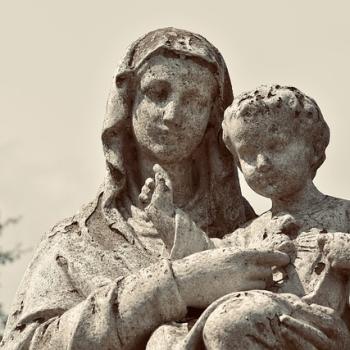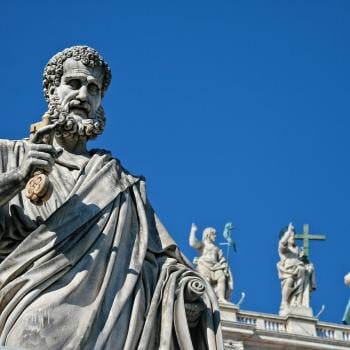Dreher himself describes it: “The monasteries were incubators of Christian and classical culture, and outposts of evangelization in the barbarian kingdoms.” However, there is no provision for this missionary-monastic venture in the regulations of St. Benedict. The broader Church developed it for the sake of evangelizing pagans, not for the “intramural” renewal and strengthening of Christian culture and civilization.
St. Francis of Assisi (AD 1181/2 – 1226) consciously started a new religious order, the “Order of Friars Minor,” and wrote a set of regulations for it. In his own lifetime he inspired and drew many married men and women wanting to live like his friars. For these laypersons he also wrote a distinct set of regulations. Something similar for laypersons wanting to be associated with the Order of St. Benedict did not develop until several centuries after the death of St. Benedict. Today these laypersons who are spiritual associates of Benedictine monasteries go by the title “oblates.” They continue with their own lives, families, and jobs anywhere in the world, but adapt and adopt suitable elements of Benedictine spirituality. They are spiritual associates of the monasteries, but are not members governed or mentioned by Church law.
A few modern Benedictine monasteries have attracted groups of laypersons and their families who have chosen to colonize or homestead land surrounding those monasteries. These laypersons may collaborate in some of the agricultural or other physical labors of the monasteries, and participate in the liturgical life of the monks, but without being admitted into the “cloister” (that part of a monastery’s land and buildings restricted to the monks alone), and without residing on the monastery land itself. This phenomenon— not a formal or organized movement— extends to laypersons some degree of St. Benedict’s intentional, legislatively governed flight from the world.
I’m sure this phenomenon benefits the laypersons and monasteries involved. However, calling it the “Benedict Option” perplexes me because St. Benedict did not intend or provide for such an option.
Dreher’s proposed option does not limit itself to laypersons who could live in the actual neighborhood of a Benedictine monastery. He foresees participants in his option as living also to salt and light up the world with what they have learned and imbibed by living his option. Is there anything Benedictine about Dreher’s option? Yes and no. Dreher openly borrows principles drawn from St. Benedict’s regulations. However, quoting MacIntyre, Dreher admits: “We are waiting not for a Godot, but for another— doubtless very different— St Benedict.” A “very different” one from the historical one!
Dreher repeats the question of Baptist theologian Jonathan Wilson: “What must the church do in order to live and witness faithfully as a minority in a culture in which we were once the majority?” Then Dreher continues:
“As we try to determine which forms of community, which institutions, and which ways of life, can answer that question, we should draw on the wisdom of St. Benedict and his Rule. We should innovate ways to adapt it to forms of non-monastic living in the world.”
Note “non-monastic” and “living in the world.” Drehers’ option cannot be the “Benedict Option” if it is “non-monastic” and “living in the world.” That is what has me perplexed. Dreher’s option is really not Benedict’s severe option of strict separation from the world. Dreher proposes instead to “innovate.” But then it is no longer a “Benedict” option, but some innovation. I’m sure that some benefit could come of it for its participants and the rest of the Church. Attempts at such an innovation have existed and do exist— some with good results, and some with bad. At various points in his article, Dreher shows awareness that the innovation he proposes can result in unhealthy, unwise, even vicious distortion or disorder within groups striving to create a way of life along the lines of his proposed option.
But what precisely should Dreher call his option? That puzzles this particular Benedictine.
Fr. Stephanos Pedrano, O.S.B.
Prince of Peace Abbey
Oceanside, California
(Fr. Pedrano previously published a version of this article on his personal Facebook profile.)
(Image of St. Benedict via Pixabay.)













